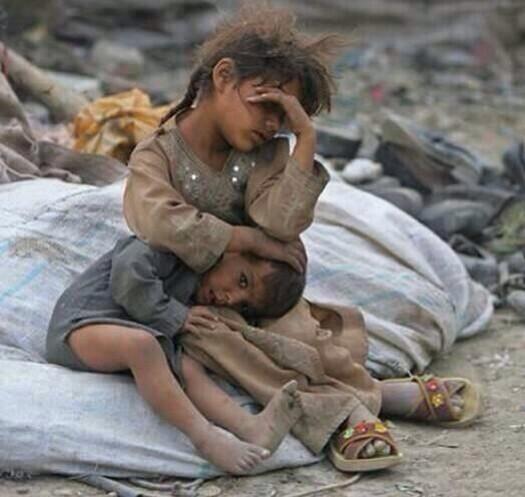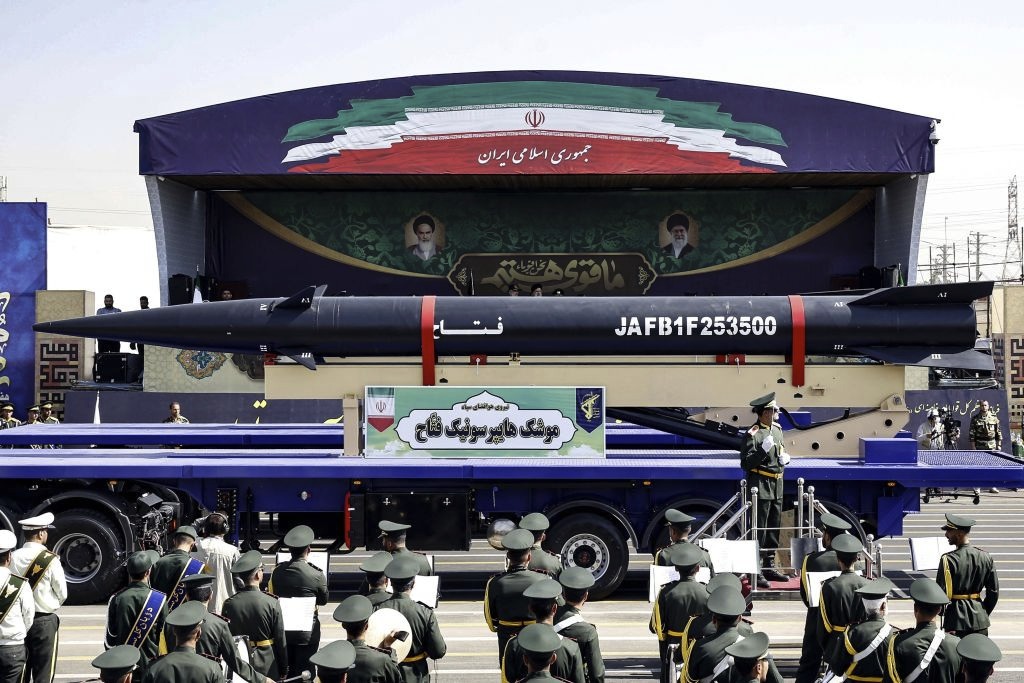Syria’s cruel ‘Hunger Games’
Hisham Melhem/Al Arabiya
Saturday, 11 April 2015
Yarmouk is a Syrian name which will live in infamy. For the past two years, this poor district a few miles away from the heart of Damascus has been subjected to a diabolical plan by the Assad regime that combines all medieval barbaric warfare tactics; including siege and starvation, and the use of modern destructive weapons a conventional army possesses such as heavy artillery, bombers and that brutal and efficient killer of civilians; barrel bombs.
Yarmouk, home for more than half a century to the largest Palestinian refugee camp in Syria, and later on, a permanent sprawling concrete neighborhood for many Syrians as well, lacks the allure of the ancient city of Homs, or the charm of the famed city of Aleppo, but shares with them the same fate of medieval siege and the Assad regime’s sickening version of the Hunger Games.
It shall be said, that in the 21st Century, in the environs of Damascus, Syria, the country that used to be part of the granary that fed the Roman Empire, people are dying of hunger, living on grass, and subsisting on cats and dogs – after receiving religious edicts allowing for that abomination- one hundred years after the great and partially man-made famine that swept Lebanon and parts of Syria during the First World War. Like that distant famine, which remained alive in our folklore, literature and collective memory, today’s brutal Hunger Games, are killing young men, destroying children and infants, physically brutalizing women and tearing apart the social, familial and cultural fabrics of society.
‘The deepest circle of hell’
Unlike the savagery of the past which remained hidden from the world for some time, the chamber of horrors that Syria has become in the last four years is there for all to see the horrendous physical destruction, smell the stench of death and hear the pleas for mercy. When Yarmouk fell into the rebel’s hands two years ago, the Assad regime responded with its terror campaign that forced tens of thousands of residents to flee, leaving behind 18000 civilians too weak, too old, too young and too destitute to leave, they were trapped with an assortment of Islamist rebels who in turn subjected the civilians to varying degrees of intimidation. It’s as if the world has abandoned not only the people of Yarmouk but the more than half a million Syrians trapped in besieged communities, and left them under the tender mercies of humanitarian organizations that are themselves susceptible to the dark machinations, deceptions and intimidation of the Assad regime.
It is not too late for the U.S. to do the right thing morally and try to finally break that ‘deepest circle of hell’ in Syria
Hisham Melhem
The U.N. Secretary-General Ban Ki-moon tried to shame the world a couple of days ago by invoking Dante’s circles of the inferno, when he said ‘in the horror that is Syria, the Yarmouk refugee camp is the deepest circle of hell’. But there were no takers. Is it possible that the world has grown accustomed to the worst human tragedy in recent decades? The U.S. is still focused on an Iraq-first approach to fighting the Islamic State (ISIS) with Syria remaining an afterthought, and finalizing the ‘Parameters’ nuclear agreement with Iran is the chief political objective for the Obama Administration in the Middle East. The European Union has an abundance of sympathy with the people of Syria, but no one wants to make serious sustainable political choices in Syria. That leaves the Arab states, the source of all the disillusionment of the Syrians today. But unfortunately for the Syrian people, their civil wars are not the only ones raging in the Arab world today. From Libya on the Mediterranean to Yemen on the Indian Ocean, new victims are falling in the crazy fratricide, in a landscape strewn with shattered dreams and schemes.
Barbarians within and Barbarians without
The dire situation in Yarmouk became truly hellish recently when the ISIS fighters stormed Yarmouk and occupied most of it. Now the residents of Yarmouk have to endure Assad’s siege, which includes cutting-off of water supplies; and the wanton savagery of ISIS. One resident told the Guardian, “We are being killed here; Yarmouk camp is being annihilated.” He continued “the situation inside the camp is catastrophic … There is no food or electricity or water, Daesh [Arabic acronym for Isis] is killing and looting the camp, there are clashes, there is shelling. Everyone is shelling the camp. As soon as Daesh entered the camp they burned the Palestinian flag and beheaded civilians.” There are 3500 children caught in the crosshairs of the Barbarians without and the Barbarians within. The inferno could only get worse; the Assad regime cannot tolerate such a close area to the heart of Damascus to remain teaming with Jihadists, which means the siege will be tightened up. When the bombs fall, including the barrel bombs, one can seek a shelter, and when the invaders march in, one can take to flight. But where would a dehydrated, malnourished, and starving middle aged man or woman go?
Laying siege to cities and forts is as old as warfare itself. In the Middle Ages the building of moving siege engines was almost perfected .In modern times sieges are easier to carry out, one can cut-off water and electricity supplies with one switch. In Syria, the Assad regime used siege and starvation early on against Homs, where most of the city was isolated and starved for three years, and then the same tactics were used against the Damascus suburbs such as Moaddamiya, and later against parts of Aleppo. It was very unsettling that the United Nations kept refusing to distribute food and medicine in rebel held areas, insisting on the principle of getting the permission of the government of the country receiving it. Such complicity in Syria was devastating.
A history of brotherly violence
With the exception of the violent crackdown that Jordan initiated against armed Palestinian groups in September 1970, following a series of clashes caused by the reckless and provocative activities of radical leftist organizations resulting in the expulsion of all armed groups from the country, Syria under the Assad dynasty was the Arab state that used most violence against Palestinians in both Syria and Lebanon. Syria’s military intervention in Lebanon in 1976, in support of right wing Lebanese groups in their war against a leftist- nationalist coalition supported by the Palestinians let to the first massacre of Palestinians (armed and civilians) at the Tal al Zaatar camp (The hill of thyme) at the hand of armed Lebanese militias backed by Syria. Casualty figures vary between 1500 and 3000. Syria continued its campaign against Arafat’s forces until it succeeded in expelling him, through its proxies from Northern Lebanon in 1983. Bashar Assad continued his father’s legacy of using and abusing the Palestinians to serve his political goals all the while claiming that he is the champion of Palestinian rights. There is a trail of Palestinian blood caused by the Assad dynasty that stretches from Tal al Zaatar in 1976 to Yarmouk today.
Given that the Palestinian refugees in Syria are stateless, and cannot travel or seek asylum like refugees of other countries, the United States in collaboration with its allies in the United Nations Security Council should shame Russia to lean on Assad to at least evacuate the civilians out of Yarmouk. It is not too late for the U.S. to do the right thing morally and try to finally break that ‘deepest circle of hell’ in Syria.






















